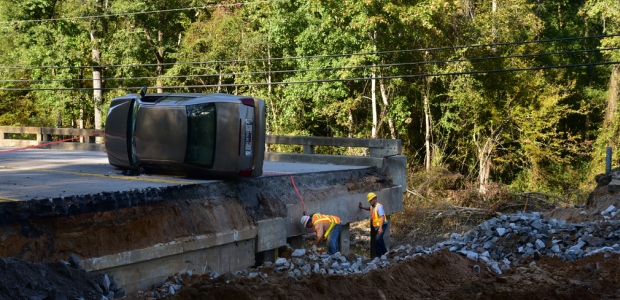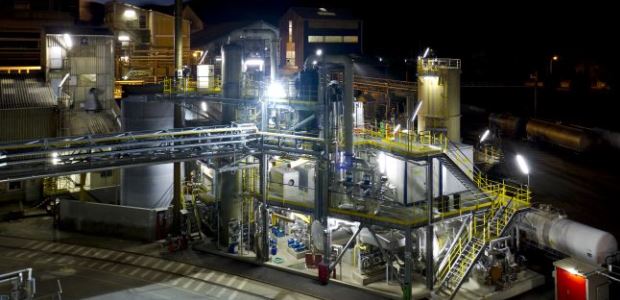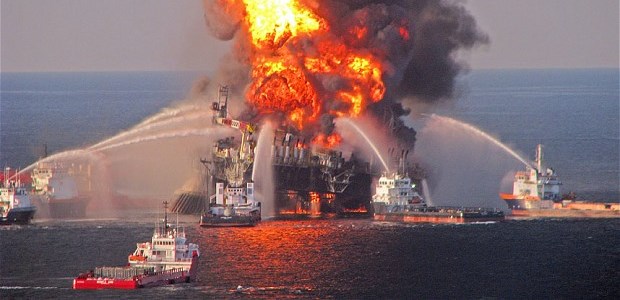The America's WETLAND Foundation (AWF) is concerned that some provisions of the proposed Well Control Rule proposed by BSEE could have unintended consequences leading to less safety and environmental protection and a reduction in overall revenue sharing directed to financing coastal restoration.
Nine states in the central United States will work on issues related to air pollution moving between states and provide lower-cost training for states' staffers.

When put into hard numbers, the financial benefits of a project that optimally combines solar and efficiency can seem too good to be true.
Contractors have until April 18 to submit proposals to perform an independent risk analysis and an independent alternatives analysis related to the Enbridge 5 pipelines under the Straits of Mackinac.

Most at risk are outdoor workers, including agricultural workers, commercial fishermen, construction workers, transportation workers, and first responders, but workers in hot indoor environments such as warehouses and factories are also at risk of heat illnesses.
In an April 5, 2016, Federal Register notice, DOE indicated waste disposal operations at WIPP are expected to resume in late 2016. That notice concerned a DOE/NNSA decision to dispose of six metric tons of surplus non-pit plutonium there, once WIPP is again operational.

U.S. District Judge Carl Barbier's April 4 order confirms the company's $18.7 billion settlement of federal and state claims announced last July.
More than 75 percent of tourism operators in Asia Pacific have high business risks related to water scarcity, according to data to be discussed at Inner Circle 2016, a global sustainability and responsible tourism forum to be hosted by EarthCheck on 21-22 April 2016 at Alila Seminyak, Bali.

For this manufacturer of organic chemicals operating many smaller processes, a single centralized thermal oxidizer system was the most cost-effective path to expand production while meeting new emission controls requirements.
This article originally appeared in the April 2016 issue of Environmental Protection.
The agency has tested a Geo-Referencing Identification Satellite tag project.
"The Arctic is in crisis. Year by year, it's slipping into a new state, and it's hard to see how that won't have an effect on weather throughout the Northern Hemisphere," said Ted Scambos, NSIDC's lead scientist.

Most Internet users think of a website as existing strictly in the virtual world, however, every website requires a hosting computer, and that host computer both uses electricity and produces a lot of heat that must be dissipated.

The challenge is also backed by ACEA, the European Automobile Manufacturers Association, with hopes to accelerate the development of convoy-driving corridors in Europe and pave the way for EU legislative changes.
The goal is to help the industry reduce environmental impacts and operating costs associated with water production, treatment, transportation, and delivery.

The debate already has begun about whether the movie cynically exploits the families of the workers who died or portrays them and the catastrophe honestly.
The EPA will be awarding $1 million to help combat pollution in Illinois, Indiana, Michigan, Minnesota, Ohio and Wisconsin.
Agriculture Secretary Tom Vilsack recently announced that the USDA will be providing $260 million for conservation partnership programs that will help improve water quality, support wildlife, protect agriculture, and more. Applications are now being accepted for 2017 funding.

Stakeholders' concerns range from asbestos and lead-based paint typically found in older and/or legacy data centers to fire-resistant clothing, contractor and construction management, elevated work such as portable and fixed ladders, and rooftop maintenance.
This article originally appeared in the April 2016 issue of Environmental Protection.
The Washington Department of Ecology had fined the district in 2015 for diverting water that was placed into trust to protect critical stream flows for threatened steelhead in the Touchet River. The river is part of a watershed that is one of 16 considered critical for providing habitat for threatened migratory fish.

A 2016 research paper in the Journal Nature predicts a 40 percent shortfall of available water across the globe by 2030 with effects not just for drinking, food production, hygiene and public health, but also for 98 percent of global electric power generation.